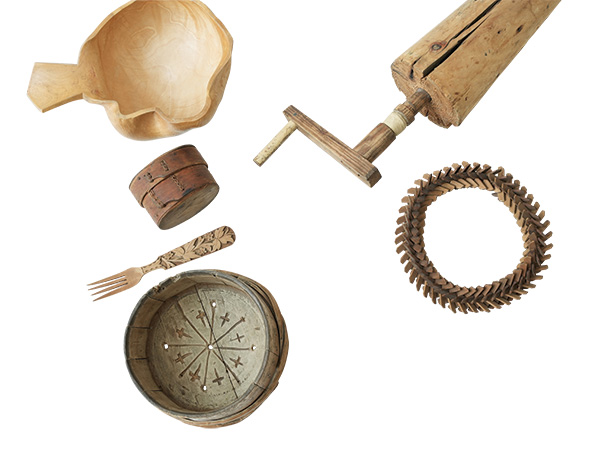
Last summer and fall, the American Swedish Institute (ASI) in Minneapolis hosted a sparkling woodworking exhibition called “Leaving Your Mark.” From traditional craft born of necessity to contemporary art with a punk heart, “Leaving Your Mark” is an exploration of lived experience, tradition and change, conveyed through the craft of woodworking.
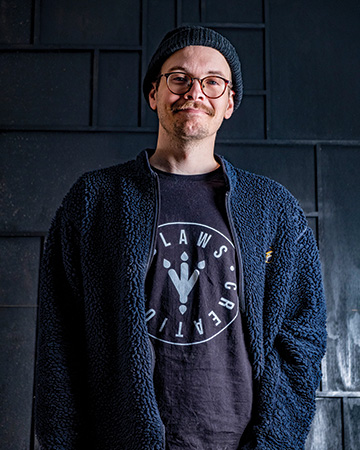
This exhibition featured the U.S. premier of Swedish artist Claes Larsson, known as ClaesKamp, whose expressive woodcarvings reflect his punk rock roots and respond to contemporary issues facing the world.
Primarily creating sculptures out of wood, Claes explores the border between traditional woodwork and the foundational experiences of his younger years with street art and punk. His techniques are surprising and in many ways topple the traditional rules of wood slöjd (handcraft eduction) in pursuit of the next generation of the art form. They invite visitors to reconsider the notion that handcraft is primarily a functional art form or an art of survival and at the same time underscore handcraft’s longstanding tradition as a medium for exchanging ideas.
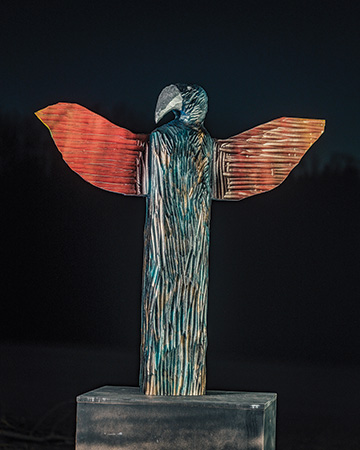
“As a kid I used to have ‘painting Fridays’ with my dad. He got a beer and I got something with a lot of sugar, we listened to rock n’ roll and painted all night. Never with any demands of certain results or progress, but for the fun of it. That’s where I found art,” Claes says.
Alongside Claes, artwork by local artist Liesl Chatman was on display. Liesl employs kolrosing (fine line surface decoration in wood) and carving as means to process and reflect on lived experience. Among other works by Liesl, visitors were able to view a special spoon-carving project she launched in 2020.
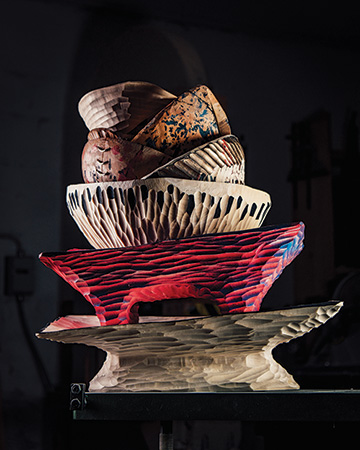
Part of the ASI campus is the Turnblad Mansion, an amazing 1908 structure with a rich history. Within this exhibit were a series of carefully selected hand-carved objects from the historic mansion, which is itself a masterpiece in woodcarving. Throughout the galleries, visitors encountered tools of necessity made and used by some of Minnesota’s earliest settlers as well as sentimental objects brought by Nordic immigrants and passed on through generations. Although separated by time and place, these objects represent the lived experiences of each of their makers and invite visitors to consider how handcraft has evolved over time.
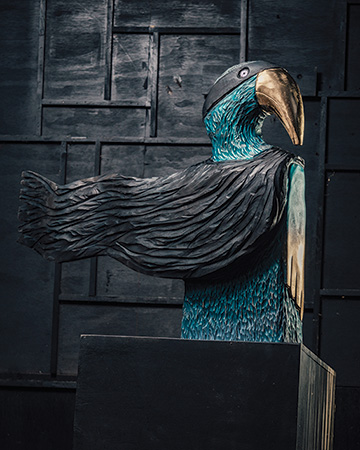
“Leaving Your Mark” coincides with the 100th anniversary of Sätergläntan, one of Sweden’s oldest and most cherished centers for learning and preserving handcraft. Students from all over the world travel to learn from master artisans at this boundary- breaking meeting place and knowledge center in the Swedish region of Dalarna.
Exhibit visitors also were able to view a selection of ASI’s collection of Scandinavian flat-plane figure carvings by Swedish artist Herman Rosell (1893-1969) alongside excerpts from “As It Was Before,” a new publication about Swedish immigration to America.
The American Swedish Institute
The American Swedish Institute (ASI) is a gathering place for all people to explore diverse experiences of migration, identity, belonging and the environment through arts and culture, informed by enduring links to Sweden. Located in Minneapolis, Minnesota, ASI has been a leading cultural institution in the Twin Cities area. ASI is open to the public. Learn more at their website.
All photos are by Claes Larsson PC Rights reserved





